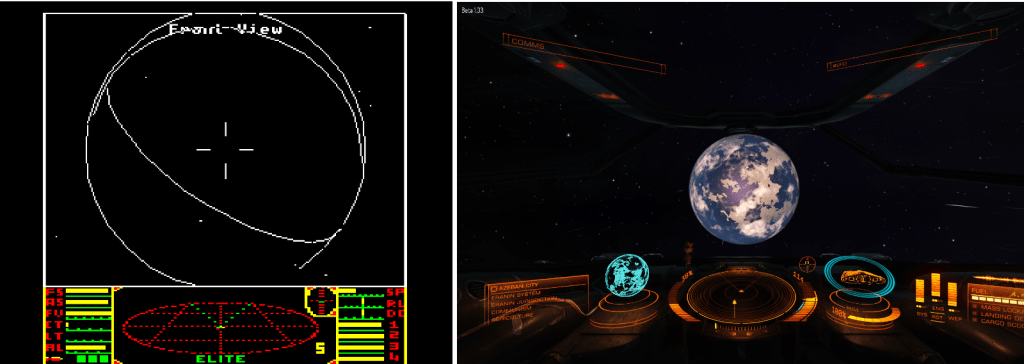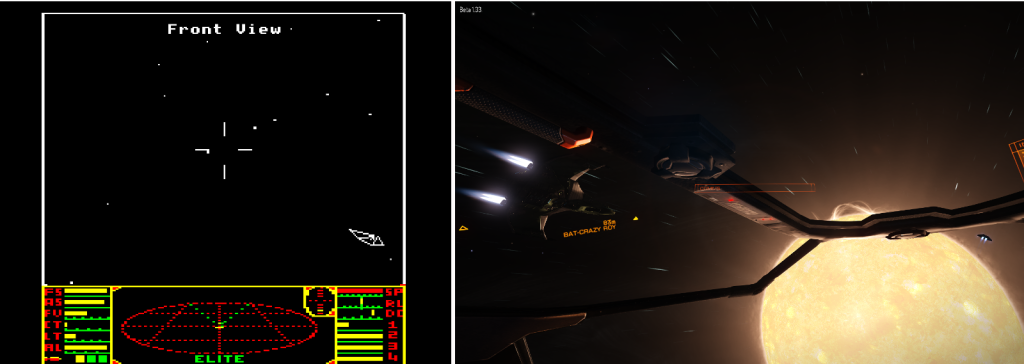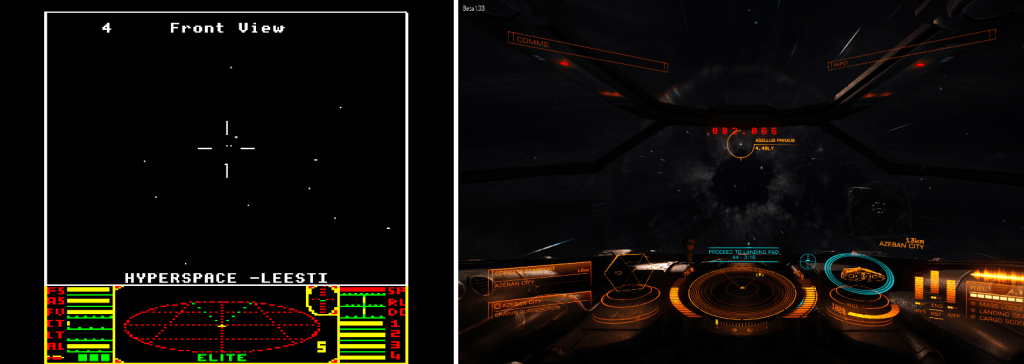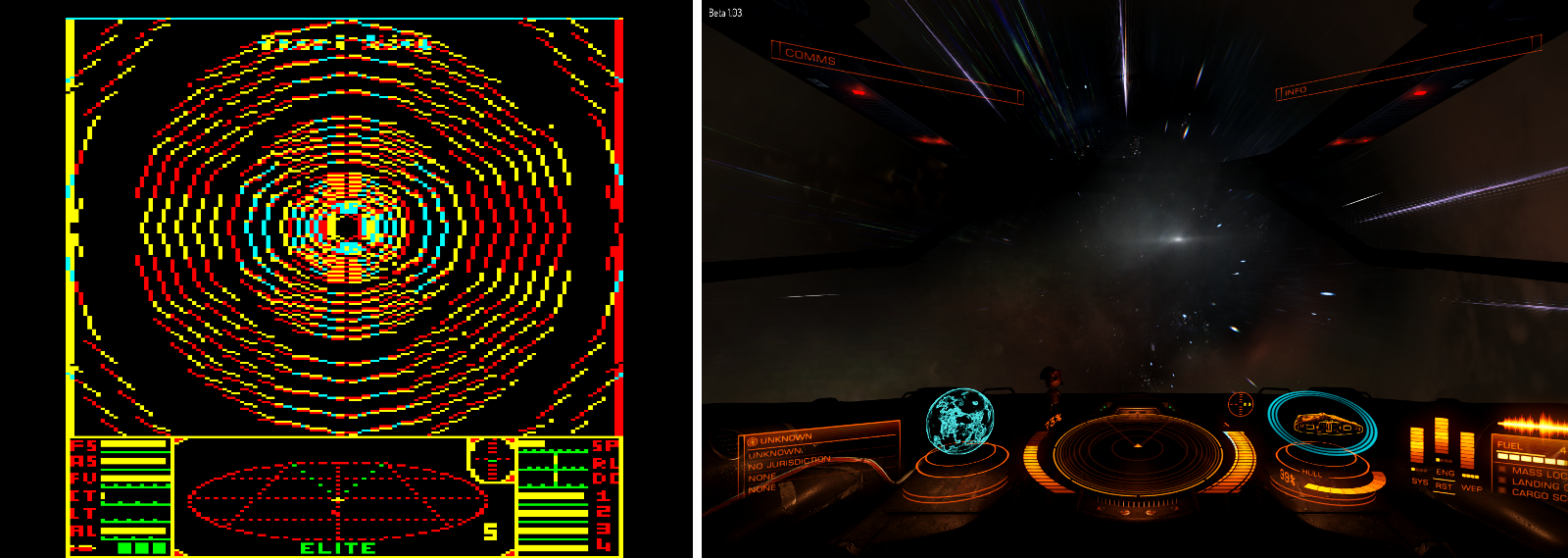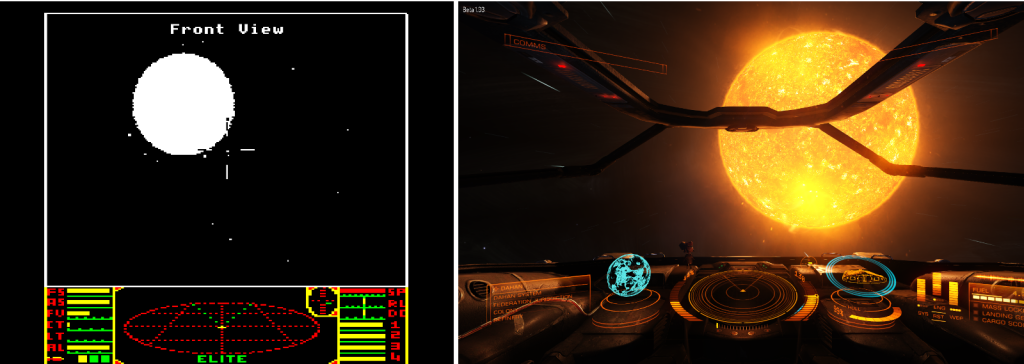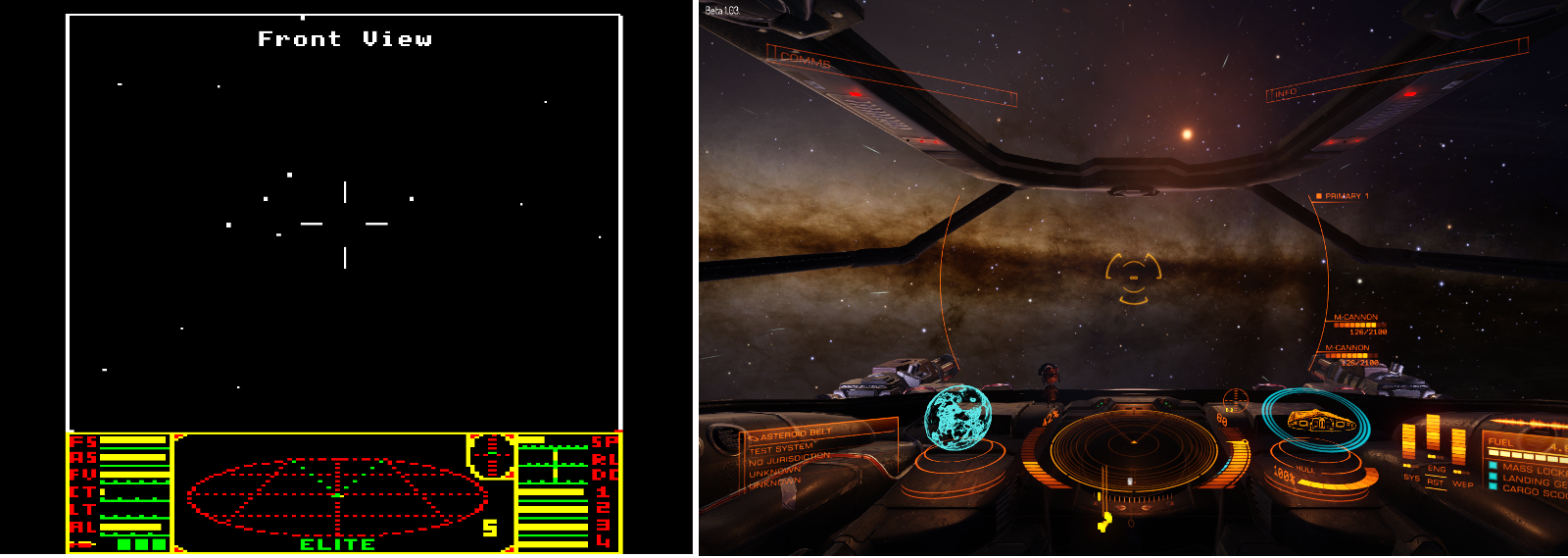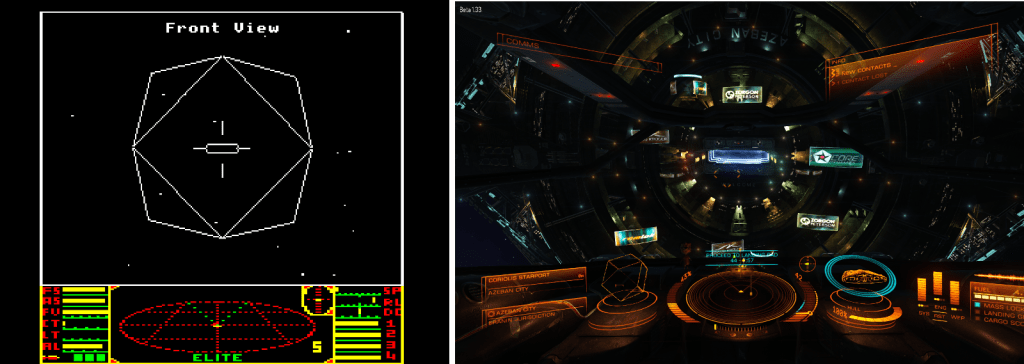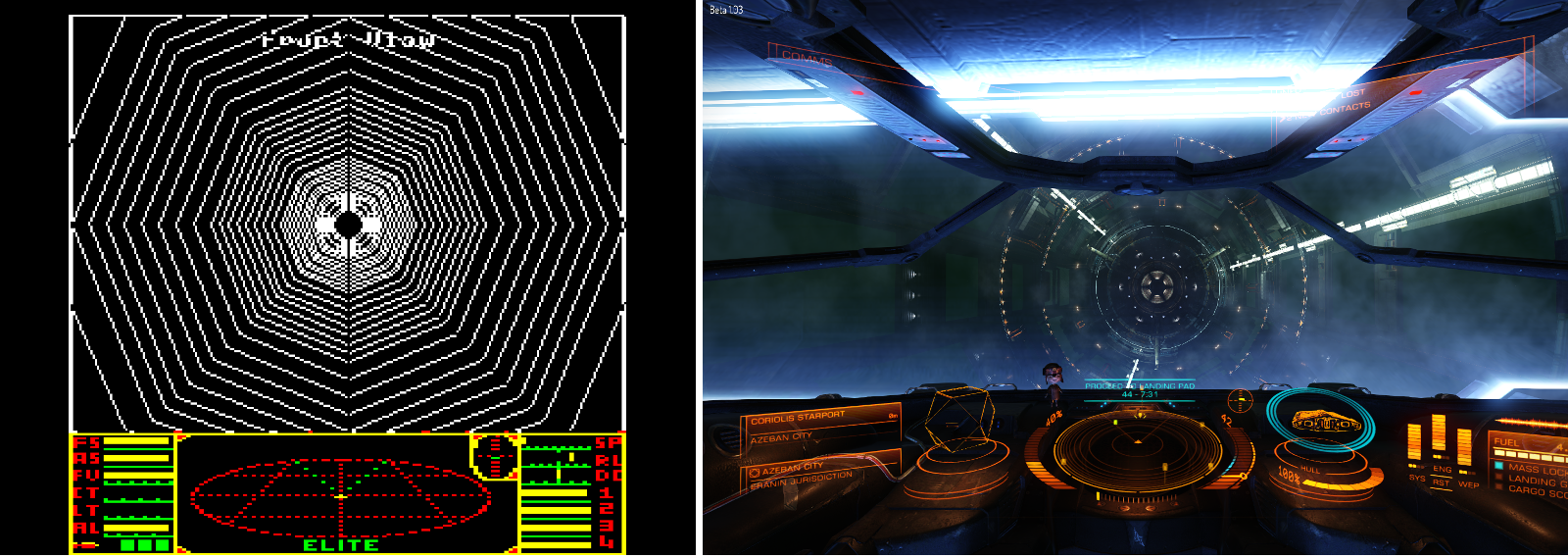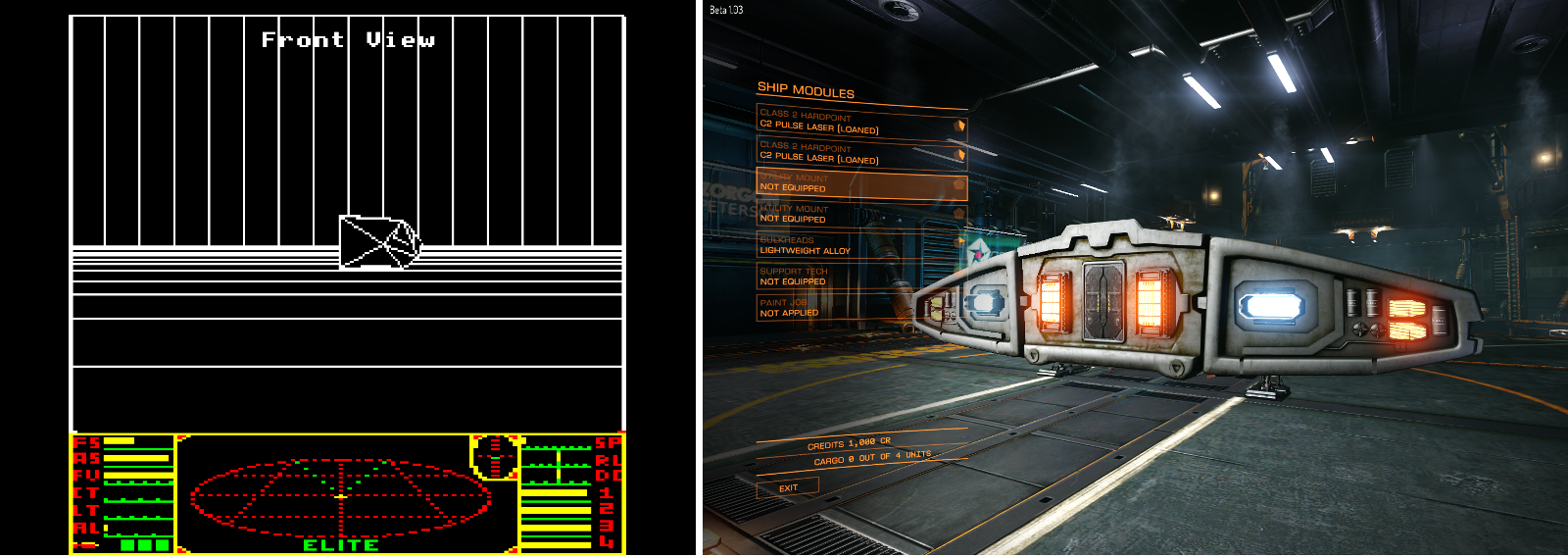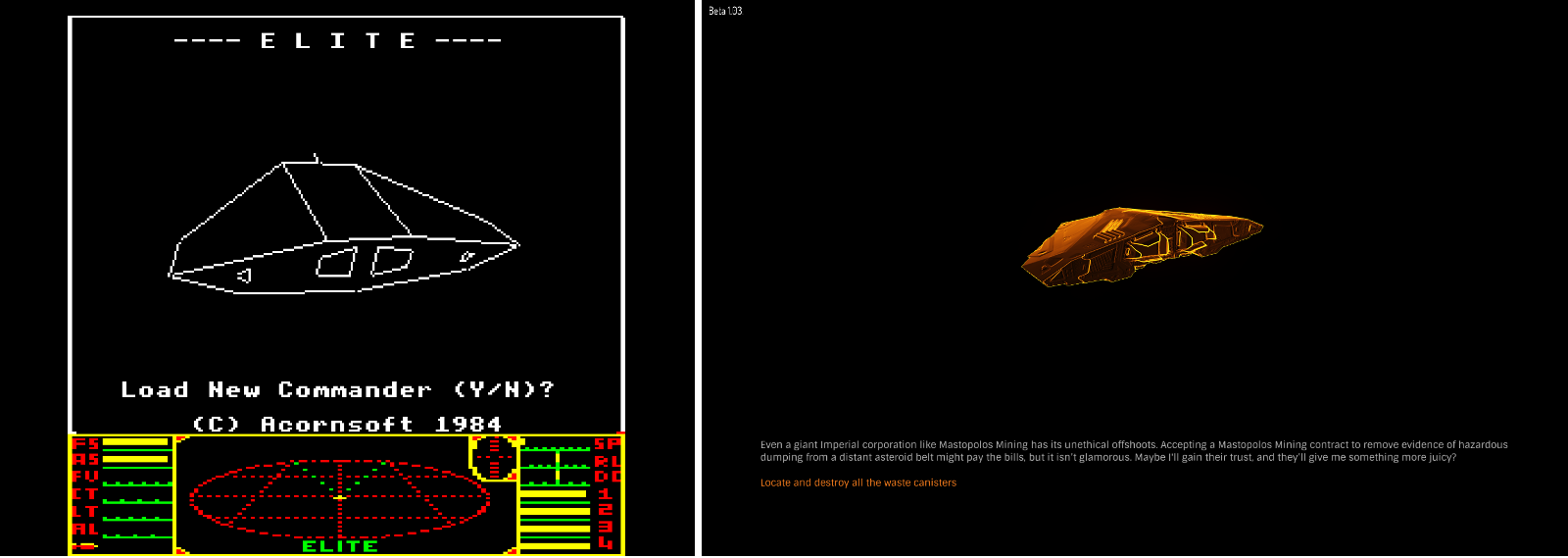Space is vast and beautiful, and in Elite, it’s also deadly. It was true in 1984, and it’s just as true today.
Thirty years ago, Ian Bell and David Braben created an iconic space trading and combat game that made my 9-year-old head spin with its epic scope and endless possibilities. You could trade goods between worlds, track down bounties, mine in deep space, or become a feared pirate. Each is a valid choice, and each offers a unique take on the game. The wire-frame graphics were like nothing I’d seen before, and they evoked a sense of wide-eyed wonder as I trekked through deep space, dying often but loving the ride.
Jump forward to 2014 and Elite: Dangerous, now in PC beta testing and scheduled to launch in late 2014, evoked the same sense of wonder in my near-40-year-old self when I first loaded it up. Visually, yes, the game is incredible, but it’s that sense that you’re truly part of a living, breathing universe that makes Elite: Dangerous so much more than just another space game.
So I decided to look back 30 years to see how the hugely ambitious original, somehow squeezed on to the BBC Model B’s 32K of RAM, holds up against its present-day successor.
I took all the screenshots in-game, occasionally dying when reaching to open a menu or press the F10 key. You can click each image to get a larger version.
If you want to try the original version of Elite for yourself, co-creator Ian Bell recommends suitable BBC emulators on his website. You can buy access to the Elite: Dangerous beta from its online store.

